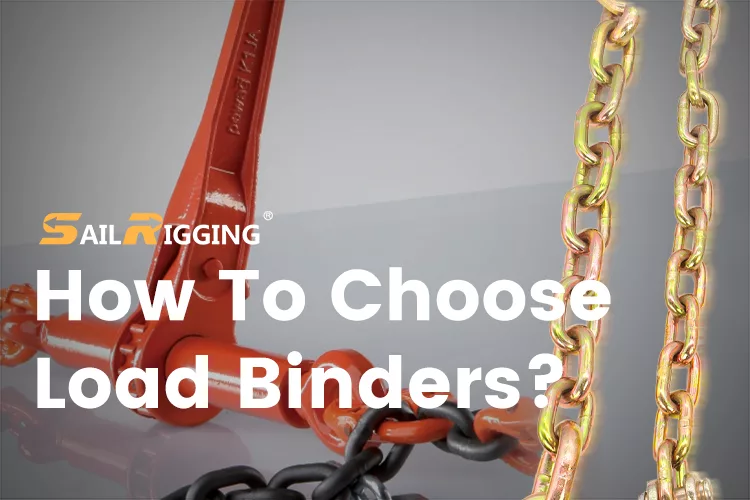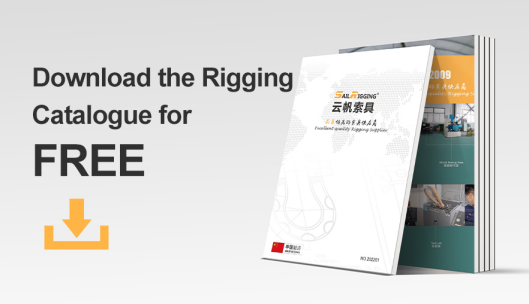How to Choose the Right Load Binders and Chains for Heavy Haul Transport?
Are you worried about the safety of transporting heavy objects? Are you troubled of the reliability and lifespan of transport safety tools? Moving large and bulky items requires not only labor force, but also the right tools. Chains and binders are essential fixing tools in the transport industry, especially for heavy equipment such as tractors and seeders, steel hot coils and other industries.
Here we will introduce you to the selection of load tie-downs and chains for heavy transport and the key factors to consider when choosing. Whether you are securing industrial equipment, construction materials or oversized loads, the correct combination of chain load tie-downs, ratchet load tie-downs and transport chains is essential to the safety of your cargo.
Table of Contents
What are load tie-downs and chains?
Chain tie-downs, also known as load tie-downs, are used with transport chains and are a device used to tighten the chain when securing cargo during transport. With chain tie-downs, the chain around the load can be tightened and fixed to prevent it from shifting or falling during transport.
When it comes to securing industrial equipment, agricultural machinery, construction materials, and oversized loads, it’s impossible to secure the cargo in place without a chain tie-down. There are two main types of chain tie-downs: ratchet tie-downs and lever tie-downs.
Ratchet load binder vs. lever load binder: Which is right for you?
Ratchet load binder: ratchet load binder utilize a ratchet mechanism to gradually tighten a chain to tie down a heavy load. This allows for more precise tensioning with less effort, providing infinite adjustment for precise tying, making it a top choice for cargo that requires fine control. The ratchet mechanism allows for fine adjustments to secure the load, making it easier to apply the exact tension needed. This type load binder fit not only fast tension, but also no need to struggle to tighten the chain to secure the cargo.
Lever load binder : Also known as snap load binder, they utilize leverage to apply tension to the chain to secure cargo. While they’re easy to install and work faster, they require more physical strength and there’s a risk of kickback if the lever isn’t properly secured. The lever can accidentally come loose when the load is applied during installation. Lever lashing ties are therefore ideal for those who need to tighten quickly and powerfully and who can easily handle the extra physical effort required.
The exact lashing rigging you choose depends on your specific cargo and the level of control you require during transport.
G43\G70\G80\G100 Chains: Which is right for you?
Choosing the right transport chain is just as important as choosing the right load binder … These reinforced transport chains are less susceptible to cutting and provide extra protection for expensive or sensitive cargo. For example, trailers are required to have 2 trailer chains on each trailer in accordance with North American state regulations. Factors to consider when choosing the right load binders.
Size
The common size is 5/16 3/8 inches. 5/16 inch load binder can be used with 5/16 inch G70 grade transport chain or 3/8 inch G43 high strength chain. If you use a 5/16-3/8 inch load binders with a 3/8 inch G70 grade transport chain, the load binder will be less strong than the chain and only 3/8 inch G43 high-strength chain or 5/16 inch G70 grade transport chain can be used. If you use a 3/8 inch G70 grade chain, it is best to use it with a 3/8-1/2 inch load binder, so that chains and binders are of equal strength. The size, breaking strength and working load limit are marked on the sling handle for easy identification.
Chain Grade
G43 and G70 are the two main grades of link chain. Grade 43 high strength chain is suitable for fixed non-transport tie-down devices. Grade 70 transport chain is suitable for objects transported on flatbeds or other moving vehicles. Each load binder can be used with any size of link chain to meet the corresponding application needs. Because different grades of chain have different load limits, each load binder is marked with chains suitable for both chain sizes to ensure proper performance. Please choose a chain that is equal to or greater than the chain load limit to maximize your working load limit and ensure safe transportation of cargo.
WLL (Working Load Limit)
Common American forged chain tie-downs are 5/16-3/8 in size, Sail Rigging has four working load limits: 5400 lbs, 6600 lbs, 7400 lbs, and 8800 lbs. By matching the working load limit (WLL) of the transport chain to the weight of the cargo, you can ensure that the transport chain has enough strength to secure the load.
Other Things Need to Consider
Working load: The weight of the cargo will determine the grade and size of the chain. It’s important to make sure the chain’s working load limit matches or exceeds the weight of the load.
The Type Of Cargo: The type of cargo you’re transporting will influence your choice of chain and binders. For example, fragile cargo or finished goods may require gentler handling and extra protection, while heavy machinery will require sturdier chains and tie-downs.
Environment:If your cargo will be exposed to harsh environments such as rain, snow, or salt water, choose corrosion-resistant chains to prevent rust and damage.
Conclusion
Finally, chain and binders are only as safe as how you are using them. If you don’t use it correctly, it will become a danger to you. If you want to learn more about our chains and binders, please contact us for more detailed information.





